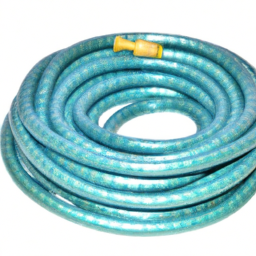Garden Hose Thread What Is It
What Is Garden Hose Thread
An Exhaustive Exploration of the Garden Hose Thread
Garden hoses are a ubiquitous presence in households across the United States and beyond. But what exactly is a garden hose thread, and how can it be used? This article will explore the historical context, key milestones, popular trends, and potential pitfalls of the garden hose thread in detail.
Historical Context
The earliest recognized trace of the garden hose thread dates back to the middle of the 19th century, to a patent issued by inventor Charles Brunton in 1869. According to the Brunton patent, the hose thread was designed to curl round itself and form a tube-like extension, with the specific intended purpose of creating an air-powered printing press.
Over time, the garden hose thread evolved beyond it's original intention and became a common fitting for household water delivery systems. In 1882, a solid brass hose coupling employing the unique thread pattern was released by the Holcomb & Hoke Manufacturing Company in Detroit, MI. As the industrialization of America advanced, so too did the adoption of the garden hose thread, becoming commonplace in installations across North America.
Key Milestones
Key milestones for the garden hose thread include the following:
Holcomb & Hoke Manufacturing Co. Wadhams patent solid brass coupling
In 1882, the Holcomb & Hoke Manufacturing Co. released the patent for a radius-threaded brass coupling for water hose connections. This threaded coupler was designed to be secure and lock in place, and is recognized as an early evolution of what we now consider the garden hose thread.
Garden Hose Thread Standardization
In the 1950s, the garden hose threading pattern was standardized in the United States by the Industrial Standards Association (ISA) and the American National Standards Institute (ANSI). This standardization enabled manufacturers to create garden hoses and couplers that are interchangeable, regardless of the brand.
Garden Hose Spray Nozzles
1950s also marked the invention of the adjustable spray nozzle, enabling users to adjust the pressure of the water that comes out of their hoses. This transformed the garden hose into a tool for more precise watering and gardening activities.
Popular Trends
Many popular trends have developed around the garden hose thread in recent years. These trends include:
Reinforced Hoses
Modern garden hoses are typically reinforced with a stronger polymer-based material, making them more resistant to kinking, cracking, and other forms of wear and tear.
Flexible Hoses
Most garden hoses now use a flexible rubber material that can be coiled or bent, making them easier to use and store.
Expandable Hoses
Expandable hoses are cordlike hoses that expand in size as water passes through them. They are lightweight, easy to store, and require little space, making them popular among gardeners with limited space.
Potential Pitfalls
While the garden hose thread has evolved significantly over the years, there are still potential pitfalls to be aware of.
Leaks
One of the primary issues with garden hose threads is leaks. If the thread isn't adequately sealed, it can allow water to leak out, leading to potential property damage and other issues.
Poor Water Pressure
If the garden hose threads aren't tightly connected, the water pressure in the hose can be significantly reduced, leading to ineffective and inefficient watering.
Cross-Threading
Cross threading is when two parts are improperly twisted together. This can damage the threads and make it difficult to get a proper seal.
Insights
The garden hose thread has been around for more than 150 years, and it has come a long way. From a basic threading pattern for creating an air-powered printing press to a modern-day, standardized threading pattern, the garden hose thread continues to be a vital part of the plumbing industry. With advances in technology, garden hoses have become more versatile and easy to use, but there are still potential pitfalls to be aware of, including leaks, poor water pressure, and cross-threading.
Ultimately, it's important to take the necessary steps to ensure that the garden hose thread is properly installed and maintained, in order to avoid potential problems.
Closing Remarks
The garden hose thread has evolved significantly since it was first invented in the 19th century. From its original purpose as a printing press to its current form as a widely used plumbing fitting, it is clear that the garden hose thread has come a long way. Understanding the historical context, key milestones, popular trends, and potential pitfalls of this important threading pattern can help users to maximize the effectiveness of their garden hoses and minimize any potential issues.

Previous Page
